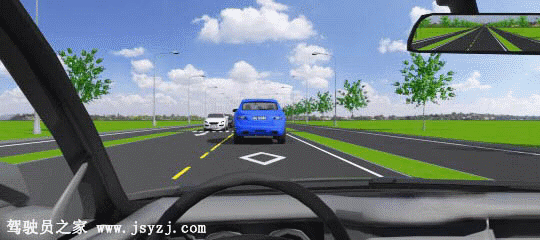1、When encountering such a situation, the vehicles should cut speed or stop to yield as approaching each other.

A、Right
B、Wrong
Answer:A
2、The sign on the right warns of a danger from rockfall on the left side.

A、Right
B、Wrong
Answer:A
3、The sign on the right indicates that overtaking is allowed on the section ahead.

A、Right
B、Wrong
Answer:B
4、Motor vehicles should stop and wait when encountering two red lights flashing alternately at evel crossings.

A、Right
B、Wrong
Answer:A
5、When a wounded person suffering burns is thirsty, he should only drink plain boiled water.
A、Right
B、Wrong
Answer:B
6、The sign indicates no overtaking on the section ahead.

A、Right
B、Wrong
Answer:B
7、As shown in the flash, what should the driver do when the motor vehicle encounters this situation?

A、Speed up and pass rapidl
B、Stop immediately
C、Sound the horn to indicate the pedestrians to yield
D、Observe the movement of pedestrians and non-motor vehicles before passing
Answer:D
8、When driving on a damp and slippery road, drivers should avoid using the emergency brake to his/her best ability.
A、Right
B、Wrong
Answer:A
9、When encountering such pedestrians while driving, a longer safety distance should be kept by drivers.

A、Right
B、Wrong
Answer:A
10、When a motor vehicle encounters an accident on an expressway, the driver and all passengers should not get off the vehicle and walk around at will.
A、Right
B、Wrong
Answer:B
11、What should the driver do to ensure the motor vehicle passes the level crossing safely?

A、Change to neutral gear and slide over
B、Stop, look, and pass
C、Speed up, look and pass rapidly
D、Slow down, look and pass slowly
Answer:C
12、If a motor vehicle has an accident on a foggy day and stops on an expressway, which of the following acts is dangerous?
A、Leaving the motor vehicle as soon as possible
B、Standing outside the guardrail as much as possible
C、Turning on the hazard lamp and fog lamp
D、Placing a warning sign behind the vehicle in the oncoming direction
Answer:D
13、When encountering this situation in a residential area the driver should speed up and pass in front of the bicycle.

A、Right
B、Wrong
Answer:B
14、When there is a braking failure on a downhill road, if there is no favorable terrain or opportunity to stop the vehicle, the driver should drop gear by one position or two positions, and control the speed by taking advantage of the braking role of the engine.
A、Right
B、Wrong
Answer:A
15、What should the driver do when the motor vehicle passes a flyover?

A、Speed up and pass rapidly
B、Keep the speed under 15 km/hour
C、Drive at the speed indicated by the traffic sign
D、Drive close to the central line of the flyover
Answer:C
16、The sign above the tunnel indicates a height limit of 3.5 meters on the road ahead.

A、Right
B、Wrong
Answer:A
17、If a motor vehicle breaks down or causes a traffic accident on the expressway and cannot run normally the vehicle may be towed by any accompanying motor vehicles.
A、Right
B、Wrong
Answer:B
18、What should the driver do to ensure safe driving when the motor vehicle encounters this situation in a residential area?

A、Sound the horn to warn the pedestrians
B、Speed up and pass as quickly as possible
C、Retain a normal speed
D、Slow down and prepare to stop
Answer:D
19、What should the driver do when he/she sees this sign on the road?

A、Use emergency braking
B、Slow down and take a look
C、Sound the horn intermittently
D、Prepare to bypass
Answer:B
20、When disembarking, what should be done by drivers in order to keep safe?
A、Opening the door and disembarking immediately after stopping
B、Observing the traffic situation ahead
C、Opening the door first and then observing the situation beside and behind the vehicle
D、Observing the situation beside and behind the vehicle before opening the door slowly
Answer:D